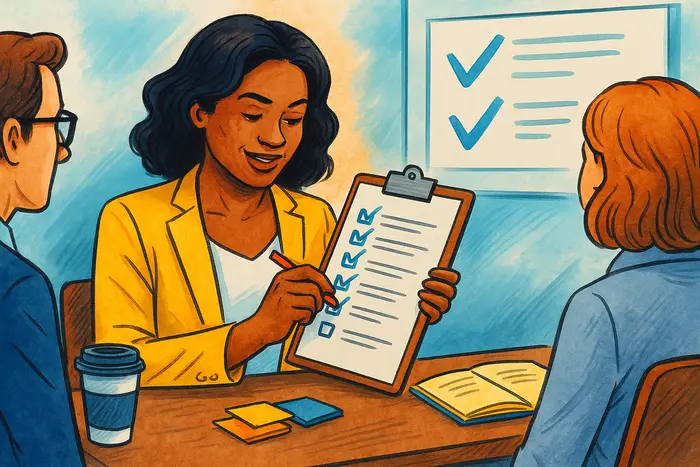Checklists might sound simple—but in high-stakes environments, they’re essential.
Surgeons use them. Pilots rely on them. Project leaders, too, can use checklists to stay focused, ensure consistency, and reduce mental overload.
If you’re juggling meetings, decisions, and moving parts every day, a good checklist won’t slow you down—it will help you lead with more clarity and confidence.
Why Checklists Work
- Reduce mistakes – Even experts forget steps under pressure
- Free up mental energy – Less brain clutter, more focus
- Build team consistency – Everyone follows the same playbook
- Make expectations clear – Less confusion, more ownership
Where Leaders Can Use Checklists
- Project kickoffs
- Meeting preparation
- Weekly team check-ins
- Decision-making steps
- Hiring or onboarding
- Delegation follow-through
Sample Leadership Checklist: Weekly Team Check-In
- Review progress on key goals
- Celebrate wins or milestones
- Surface blockers or bottlenecks
- Re-align on next week’s focus
- Confirm ownership and next steps
- Ask for feedback or suggestions
Tips for Creating Effective Checklists
1. Keep It Short and Action-Oriented
Aim for 5–7 items max. Use clear verbs like “review,” “confirm,” or “ask.”
2. Focus on High-Risk or High-Value Steps
Not every detail belongs on a checklist—just the ones that really matter.
3. Use Templates and Automate
Set up reusable checklists in tools like Notion, Asana, Trello, or even Google Docs. Trigger them with recurring meetings or project phases.
4. Make It a Team Tool
Share your checklists. Encourage others to use or adapt them. This builds shared habits and reduces dependency on any one person.
From Chaos to Clarity
Checklists help leaders step back from the chaos and stay focused on what matters. They don’t replace judgment—they support it.
By using a few smart checklists, you’ll:
- Lead more proactively
- Reduce mental fatigue
- Help your team execute with confidence
Summary: Small Tool, Big Impact
Leadership doesn’t always need big moves. Sometimes, it’s the small habits—like using a checklist—that make the biggest difference.
Try building just one checklist this week. You might be surprised how much smoother things run.
